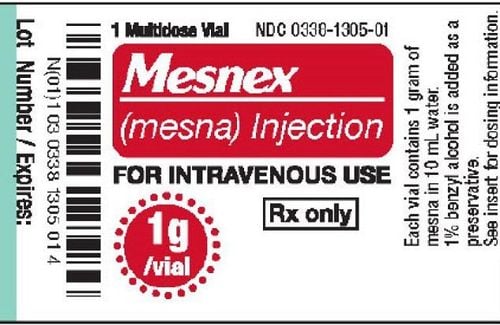This is an automatically translated article.
Cladribine is a cancer chemotherapy that helps treat hairy cell leukemia, chronic lymphocytic leukemia, or relapsing multiple sclerosis. However, patients using Cladribine must be aware of side effects.1. What is Cladribine?
Cladribine is a cancer chemotherapy agent belonging to the group of anti-metabolites. These drugs, when entering the body, are absorbed by the cells and can block the cell's reproduction process by inhibiting DNA synthesis.Cladribine drug has the following dosage forms:
Solution for injection 1 mg/ml, vial of 10ml; Solution for injection 2 mg/ml, vial of 5ml; 10mg tablets.
2. How to use Cladribine
Cladribine is used by intravenous infusion or orally depending on the doctor's prescription. The duration and frequency of the patient's treatment will be determined by the doctor, with a dose dependent on body weight. If there is redness, swelling, or pain at the injection site, notify the nurse immediately.
3. What disease does Cladribine treat?
Cladribine injection is indicated in the following cases:
Hairy Cell Leukemia (HCL): This is a B-cell malignancy; Chronic lymphocytic leukemia (CLL) unresponsive or metastatic during or after treatment with at least one standard regimen containing an alkylating agent. Cladribine is indicated for the treatment of relapsing-remitting multiple sclerosis (MS).
In contrast, Cladribine is contraindicated for patients with the following problems:
Hypersensitivity to Cladribine or other ingredients in the drug; Pregnant women; Breastfeeding mothers; Children under 18; Moderate to severe renal impairment (creatinine clearance ≤ 50ml/min); Moderate to severe liver failure (Child-Pugh score > 6); Cladribine is contraindicated for concomitant use with other myelosuppressive agents.
4. Dosage of Cladribine
Recommended adult dose of Cladribine:
Hairy cell leukemia (injection): The recommended regimen is a 5-day course of Cladribine at a daily dose of 0.14 mg/kg subcutaneously. Or 1 continuous 7-day course of Cladribine with a daily dose of 0.09 mg/kg IV. Patients should be advised to use exactly the above dosage, possibly delay or stop Cladribine if experiencing neurotoxic or nephrotoxic side effects; Chronic Lymphocytic Leukemia (CLL) (Injectable): A 2-hour continuous intravenous infusion of Cladribine on days 1 to 5 of a 28-day cycle at a dose of 0.12 mg/kg/day (or 4.8 mg) /m2 skin/day). The patient's response to Cladribine should be determined every two cycles of treatment and consideration should be given to discontinuation after 2 cycles of non-response. Condition of response to Cladribine the number of lymphocytes decreases by 50% or more, then it is possible to continue for 2 more cycles and re-evaluate the response to see if Cladribine should be continued or not. The maximum number of cycles of treatment for chronic lymphocytic leukemia with Cladribine is 6; Relapsing multiple sclerosis (oral): The recommended dose of cladribine is 3.5 mg/kg body weight for 2 years, divided into 1.75 mg/kg/year for a single course of treatment. Each course consisted of 2 weeks of treatment, one at the beginning of the first month and one at the beginning of the second month of the respective treatment year. Each week of 4 or 5 days of treatment, respectively, patients received 1 or 2 Cladribine tablets (10mg or 20mg) once daily, depending on body weight.
5. Cladribine side effects
5.1. Cladribine reduces the number of white blood cells White blood cells play a role in protecting the body from infectious agents. During treatment with Cladribine, a patient's white blood cell count may decrease to an extent and put the patient at increased risk of infection. Patients should notify their physician immediately if they develop symptoms such as high fever, sore throat, signs of a cold, cough, difficulty breathing, burning in the urinary tract, or ulcers that do not heal.
5.2. Anemia Cladribine can reduce the number of red blood cells and cause anemia. Red blood cells are blood cells that carry oxygen to the organs of the body. When the red blood cell count is not guaranteed, the patient may feel tired or weak due to the lack of oxygen for the organs to function.
5.3. Decreased Platelet Count The risk of bleeding with Cladribine is higher due to a decrease in the platelet count. Patients should tell their doctor if they have symptoms of bleeding such as skin bruising, nosebleeds, bleeding teeth, or bloody urine. If the platelet count is too low, the patient may need a platelet transfusion.
5.4. Neurotoxicity Cladribine has been reported to affect the nervous system. Patients should notify the treating doctor if the onset of symptoms such as weakness, numbness, confusion...
5.5. Kidney problems Cladribine can cause kidney damage, including increased blood creatinine levels. The doctor needs to monitor the patient's kidney function through necessary blood tests. Patients must notify their doctor if they notice signs of kidney damage such as decreased urine output, blood in the urine, swollen ankles or loss of appetite.
5.6. Fever Fever may occur after using Cladribine. This symptom is most commonly seen when Cladribine is used to treat hairy cell leukemia. Patients must keep in touch with their doctor if their fever is higher than 38 degrees Celsius as this may be related to an infection. However, Cladribine-induced fever can occur even if the patient's white blood cell count is not low.
5.7. Tumor lysis syndrome If there is a large amount of cancer cells in the body before treatment with Cladribine, the patient is at risk of developing tumor lysis syndrome. This happens when cancer cells die too quickly and their waste products overwhelm the body. Patients may be prescribed medications (such as allopurinol) and fluids to help prevent this side effect. If there are symptoms such as nausea, vomiting, diarrhea or impaired consciousness (coma, drowsiness, lethargy), the patient should notify the doctor immediately. Tumor lysis syndrome can affect a patient's kidney function, so your doctor will monitor your kidney function with blood tests. Patients should notify their doctor if they have little or no urine at all.
6. Some other notes of Cladribine drug
Vaccination with live vaccines:
Patients or any relatives living in the same household should avoid receiving live vaccines or live attenuated vaccines during Cladribine treatment; These include the Herpes Zoster (Zostavax) vaccine, the shingles vaccine, the oral polio vaccine, the measles or flu (inhaled) vaccine, the rotavirus and yellow fever vaccine. . Cladribine Reproductive Concerns:
The fetus exposed to Cladribine may have birth defects, so patients should not become pregnant during cancer treatment with Cladribine. Therefore, it is extremely important for patients to use safe forms of birth control during treatment; Patients should consult their doctor before breast-feeding while taking Cladribine. Above is the complete information about Cladribine drug. To ensure safety, patients should carefully read the information on the instructions for use before use.
Please dial HOTLINE for more information or register for an appointment HERE. Download MyVinmec app to make appointments faster and to manage your bookings easily.













